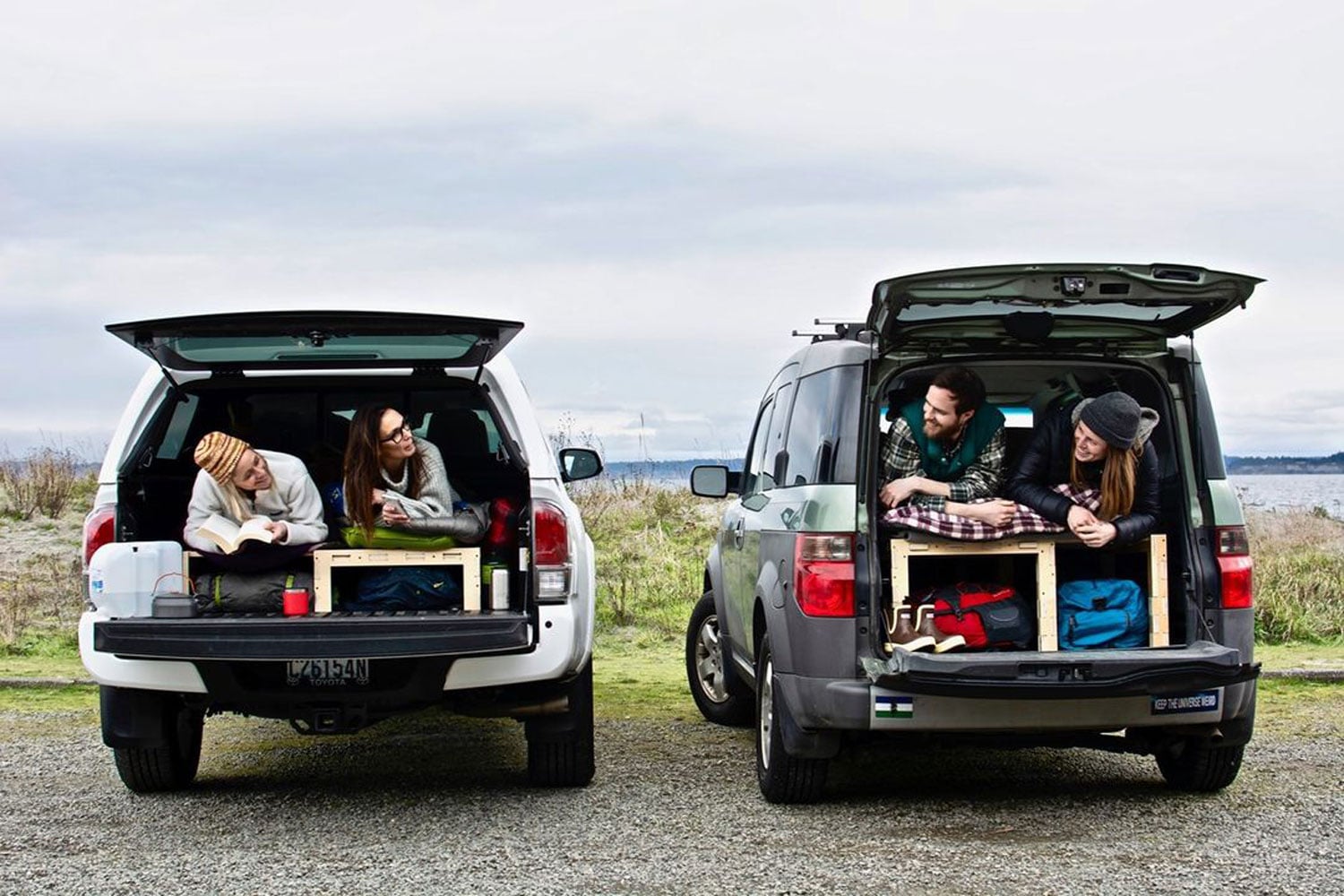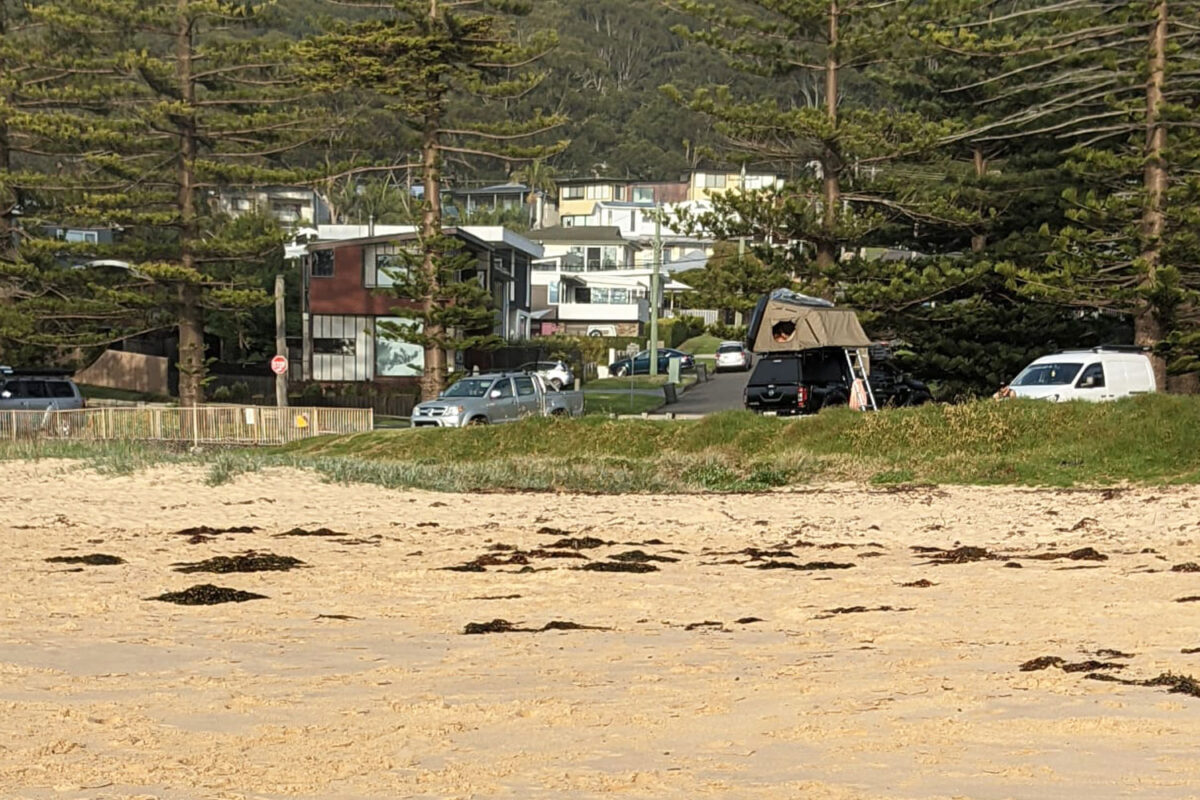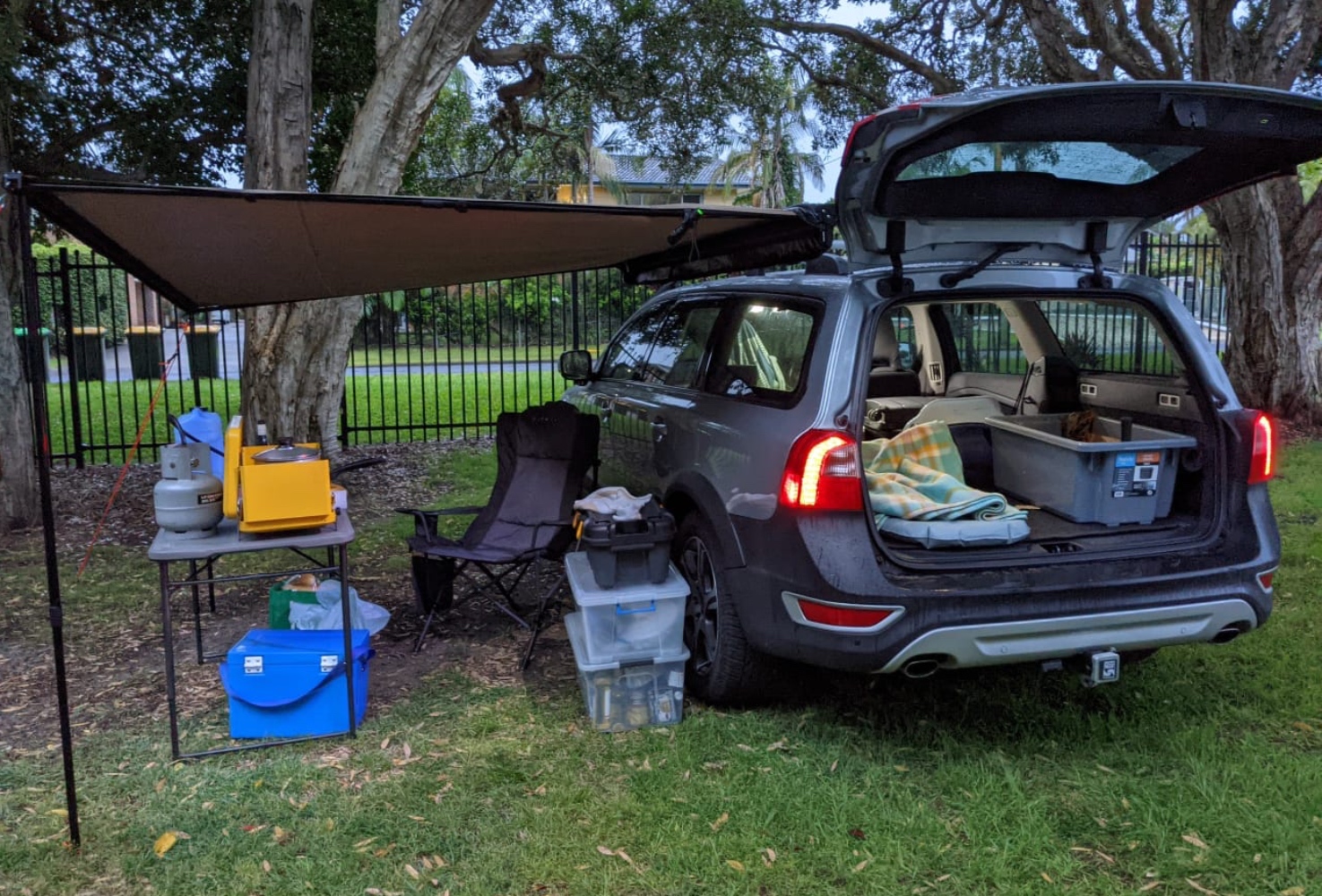
Quitting the 9-5 and heading out on the road trip of a lifetime is what many dating app users say they want to do with a future lover. Though the ‘riding off into the sunset’ part of that may be a bit of a cliche, for those who actually do want to experience everything their home country has to offer, there really is no better option than getting behind the wheel and completing the trip at your own pace (with or without a partner).
Yes, you can obviously get to hotspot destinations far quicker if you were to fly. And, realistically, the cost of a one-way, or a return ticket will be significantly less than the amount you’d need to spend on fuel, supplies and maintenance of your vehicle (depending on the length of the trip). But you would miss out on the more hidden destinations in between your points A and B, such as majestic waterfalls or Instagram-worthy hikes.
If you’ve ever considered living off-grid to make your way around countries such as Australia or the United States of America, we’d bet our lunch money you would only ever consider doing it in a van.
It’s understandable: they have an incredible amount of space in the back, making them ripe for conversion. And if manage to snag yourself a 4×4 van, then you can venture even further off the beaten path and into uncharted territory.
As we saw in 2020, during the height of the pandemic in Australia, Sydney-based van conversion company Van Go Fit Outs experienced a surge in customers, due to the fact Australians were banned from flying out of the country.
RELATED: ‘Don’t Fly, Drive’: Australians Seeking Travel Gratification Turn To Four Wheels
Australians’ only option at that time was to travel domestically. And – given domestic flights were also for many months a no-no and – the only realistic option left, for many aspiring travellers, was to sleep in their own vehicles.
Indeed, the pandemic could be viewed as a blessing in disguise for some, and it has most certainly sparked a camping renaissance of sorts, especially here in Australia. You only need to check second-hand car listings for proof, with prices of vehicles such as the Toyota Landcruiser, Nissan Patrol and Ford Ranger going through the (tend clad) roof.

You’re also now far more likely to see one of these aforementioned bush-tackling vehicles with a rooftop tent (or swag) perched on the roof racks to provide a slightly more glamourous experience to the whole camping ordeal.
RELATED: Australia’s Latest 4×4 Trend Solves Camping’s Biggest Problem
But what if you don’t have the money to spend on a van and the subsequent conversion? And what if you don’t intend to go road tripping 365 days of the year, but would appreciate a mobile home for the odd two-week holiday or weekend away? Finally: what if you want to sleep in a vehicle, but also want to be comfortable whilst driving and have a bit more performance? Would a van really tick all these boxes?
We didn’t think so.
It’s with this in mind that we believe there is a serious case for the second-coming of the station wagon or SUV as a vehicle to camp in.
We’ll admit, station wagons aren’t currently the most popular style of vehicle in Australia. In fact, sales of wagons have dropped dramatically. Drive reports that just 6869 wagons were sold in Australia in 2020, down from 49,823 back in 2000. It’s hard to think of a reason why, though. Station wagons offer space and practicality, along with performance, for not always a lot of money. And given the current surge in popularity (just check out Instagram’s #suvlife, #suvcamping and #carcamping communities), perhaps those figures will tell a different story at the end of 2021 or 2022.
In any case, Subaru has long been known as the king of affordable station wagons here in Australia, and as Drive relates, the Outback sits in 30th place on new car sales in August 2021 (the first entry for a station wagon). But, it’s hard to truly define it as a station wagon, since it now sits a lot higher up, putting it into SUV territory.
I, for one, am a huge fan of station wagons as everyday vehicles already, and last year built my own bed frame for the back of my Subaru Liberty. Admitting to my lazy nature, I have only used the frame once in the past year (to great effect, I might add), but this proved (to myself at least) that spending money on a van conversion would have been wasted.
Save from the one weekend I’ve slept in my car, I haven’t had to lug around a full bedroom on wheels (read: unnecessary weight), and have been able to enjoy a regular car with some performance and plenty of space for friends in the back seats and shopping in the boot.
It’s not just myself who has found a liking to sleeping in a station wagon. My colleague, James, has used his Subaru Forester on several occasions, although perhaps not with the same life-changing experiences others on Instagram would have you believe you get when holidaying in your vehicle. Although, this could be due to his lack of awareness with regards to where he parked.

A friend of mine from Sydney recently came to visit me in Byron Bay and stopped off along the way to enjoy living out of his Volvo, too. And, to be honest, I’m quite jealous of his setup. The picture above doesn’t paint the whole picture for Alex’s station wagon camper: he does have a roof tent for it, but since he was only going to be camping for one or two nights, didn’t feel the need to attach it to his car.
Let it be known, you don’t have to buy a huge 4×4, such as a Toyota Landcruiser or Land Rover Defender to be able to use a rooftop tent. As long as you find one that fits within the load limits of your station wagon, you can comfortably attach one.
It’s not just us here in Australia that can enjoy such luxuries of comfortable cruising and practicality. DMARGE reached out to American solo traveller Monique – @neveraroadmap – who has been travelling since childhood, but it wasn’t until the pandemic hit that she decided to convert her SUV to help her see even more of the world.
“I decided to convert my SUV for numerous reasons. I am a spontaneous traveller and tend to never have a plan. Therefore, I don’t have reservations anywhere.”
“I was a tent camper for many years and that way worked just fine, but when COVID hit I found a lack of available sites becoming a problem. I was struggling to find places to stay in a tent that I felt were safe for a solo female traveller, aka boondocking,” she relates.
“Also, to be very honest, climate change has made tent camping much harder. The weather seems to change rapidly and more than once I found myself scrambling. Converting my SUV made perfect sense for safety, weather, and ease of travel in almost any location.”
As many of us would likely do, Monique adds she did consider other options first, before ripping the seats out of her Nissan Rogue and replacing them with a bed: “I did consider converting a van, but I wasn’t ready to make that kind of commitment. I looked at teardrop trailers, but the towing capacity on my Rogue wasn’t ideal and the cost was higher than expected.”
“I thought about a rooftop tent, but then I felt like I would be a sitting duck at night with no possibility of escape. Converting my SUV really became the only option as I went through my choices.”
Settling on converting her SUV came with added benefits, besides a safe place to sleep, as she continue, “I get great gas mileage, I never have to worry about parking, it can still be used as my regular car in daily life, and I am ready to hit the road on a moment’s notice.”
Check out Monique’s SUV conversion in the video below
Monique also speaks to the problems many van-sleepers face: the very fact they look particularly suspicious. In Byron Bay, for example, the council have made it practically impossible to park and sleep anywhere close to the main town.
“Another benefit of the SUV is that I don’t look like a camper and I can park in more locations in stealth mode. If I’m unable to find a site I have been able to drive into regular neighbourhoods and go unnoticed. I just look like a regular parked car. I have left my front seats to look like a regular car.”
Expanding upon the fact an SUV or station wagon can be used as an everyday car when you don’t feel the urge to go and explore, Monique adds, “My SUV is converted in a way that it would take about an hour to convert it back into a regular car. Everything other than the floor is unattached and the floor uses all of the existing holes in the SUV.”
RELATED: I Jumped Onboard 2021’s Most Cliche Travel Trend. It Was A Complete Disaster
“I made no alterations to the car. It takes about 5 minutes to take everything out minus the floor. I’ve found having the seats removed works for my lifestyle. It has become a useful car without the backseat.”
She also tells us that while she does “have a home to come home to”, she often leaves her Nissan set up as a camper, as it encourages her to “hang out in it and do more spontaneous local stuff.”
But, the main draw for Monique with regards to converting an SUV compared to a van, was the relatively low cost of the whole project.
“The best part of the SUV set up is the price. If you already own an SUV it’s honestly so simple and cheap to convert. All you need is the floor for about US $100 in supplies and you’re good to go. I made mine in two sections with a sheet of plywood and a hinge. I wanted to be able to access my spare tire easily. Then it comes down to what works for you?”
“I made a plywood platform bed and used cabinet feet that can change in height. I am able to have some storage under the bed, yet I can still sit up comfortably. I invested around US $2000 for the whole setup with my most expensive purchase being a portable power station for $500. I have a 5-gallon water tank with an electric faucet and an electric portable mini-refrigerator.”
“I have creature comforts like a heating blanket and I can make coffee in three different ways (priorities). I already owned a rooftop box and that’s where I keep my extra stuff.”
You only need to take a look at Monique’s Instagram and TikTok accounts to see just how little she loses out on compared to our visions of the true ‘vanlife’. A comfortable bed to sleep on. Power. Supplies. Even boiling water. And she’s not alone. Social media is full of people (and pooches) doing a similar thing.
Monique admits in her videos she had no prior woodworking skills or any experience converting cars, but she didn’t let this hold her back. And if you dream of living the ‘vanlife’ lifestyle, but don’t have the financial backing, you shouldn’t let that hold you back either. As Monique says:
“I feel there are so many of us that would love the vanlife, but just are not ready for such a big purchase and don’t plan to move in permanently or become a digital nomad. I decided to work with what I had and not wait for some future date that might never arrive for the Vanlife dream. I’m living the SUVlife now and loving it.”
If you already have a station wagon or an SUV sitting on your driveway, just imagine how much further you could take it than the local shops. Get converting. Go exploring.
Read Next
- I Committed A Cardinal Road Trip Sin & Have Absolutely Zero Regrets
- Australia’s Latest 4×4 Trend Solves Camping’s Biggest Problem
The post Roll-On, Van Life: SUVLife Is Australia’s Latest Camping Craze appeared first on DMARGE.
from DMARGE https://ift.tt/3Fzi2Bu
 (@jasmine.the.red.dobie)
(@jasmine.the.red.dobie)






0 comments:
Post a Comment